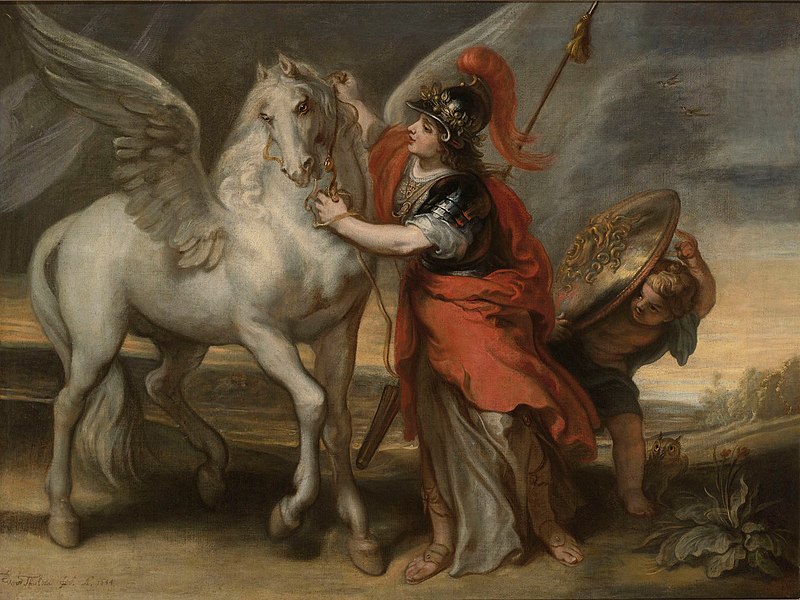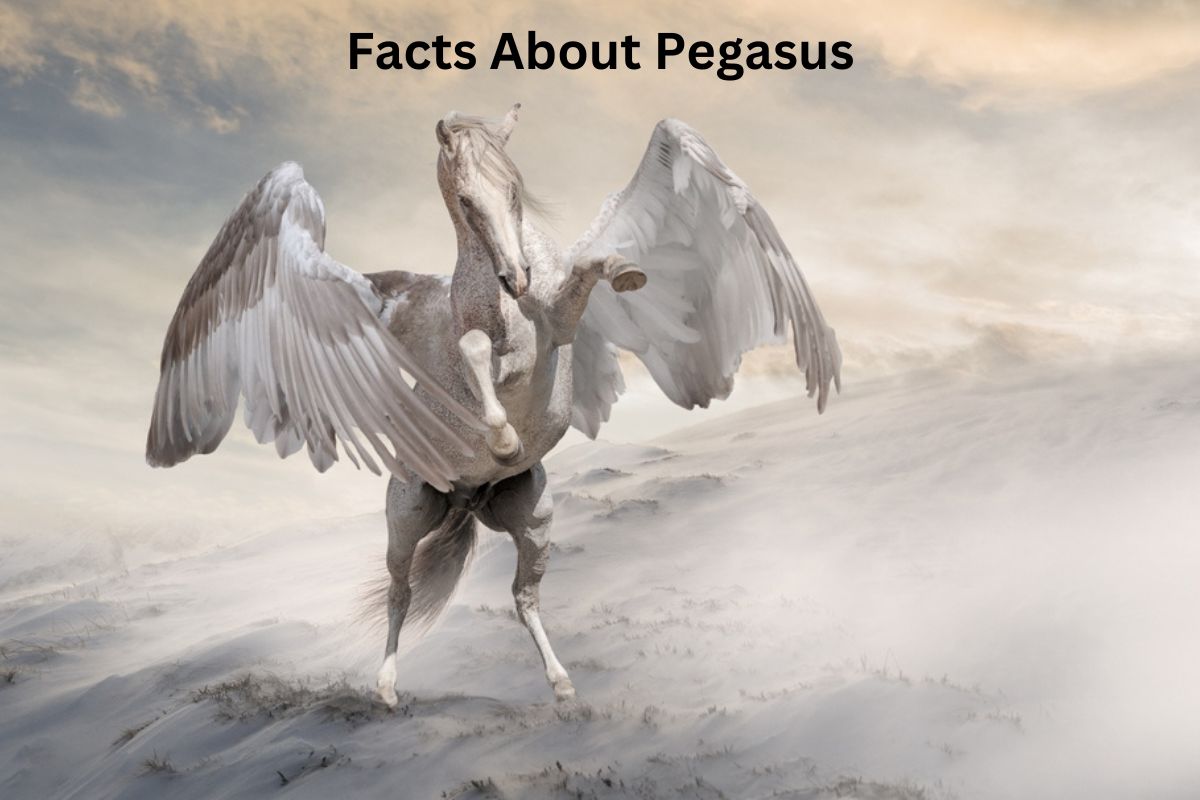Pegasus is a legendary creature from Greek mythology, depicted as a winged horse. Born from the severed head of the Gorgon Medusa, Pegasus emerged fully grown with magnificent wings.
It is often portrayed as a white horse capable of flight, symbolizing inspiration and poetic arts.
Pegasus is closely associated with the Muses and has been a popular motif in art, literature, and culture throughout history.
Its story has been retold in various forms, showcasing its significance as a symbol of freedom and the limitless power of imagination.
Pegasus Facts
1. Pegasus is a mythical creature from Greek mythology
Pegasus holds a significant place in Greek mythology and is often considered one of the most well-known creatures of ancient Greek folklore.
Also Read: Facts About Hestia
Its origin story and various appearances in mythological tales have made it an enduring symbol in Western culture.

2. It is a winged horse.
Pegasus is commonly portrayed as a horse with majestic wings attached to its back. These wings grant it the extraordinary ability to fly, distinguishing it from ordinary horses.
Also Read: Medusa Facts
The concept of a winged horse captured the imagination of ancient Greeks and continues to be a fascinating and iconic representation in art, literature, and popular culture.
3. Pegasus is often depicted as a pure white horse
The visual depiction of Pegasus typically presents it as a horse of pure white color. This color symbolism represents purity, grace, and beauty. The whiteness of Pegasus further enhances its mythical and otherworldly aura, emphasizing its divine nature.
The white coloration also contributes to its association with concepts such as inspiration, wisdom, and ethereal realms.
4. It has the ability to fly
One of the most remarkable characteristics of Pegasus is its ability to fly. Unlike ordinary horses confined to the ground, Pegasus can soar through the skies with grace and agility.
This attribute is often seen as a symbol of freedom, liberation, and the transcendent power of the human spirit. Pegasus’s flight represents the boundless possibilities and the capacity to rise above earthly limitations.
5. Pegasus was born from the severed head of Medusa
According to Greek mythology, Pegasus’s origin is intertwined with the story of Medusa, one of the three Gorgon sisters. When the hero Perseus beheaded Medusa, Pegasus sprang forth from her neck.
This unique birth accounts for Pegasus’s exceptional nature, as it emerged fully grown and with its majestic wings already formed.

6. It is associated with the Muses, goddesses of the arts
Pegasus is closely connected to the Muses, the nine daughters of Zeus and Mnemosyne who preside over the arts and sciences. In mythological accounts, Pegasus served as the mount of the Muses, carrying them to the realms of inspiration and creativity.
Pegasus’s association with the Muses further reinforces its role as a symbol of artistic inspiration, poetic expression, and the pursuit of knowledge and enlightenment.
The collaboration between Pegasus and the Muses underscores the belief that creativity and intellectual pursuits are intertwined and can reach great heights when combined.
7. Pegasus symbolizes inspiration and poetic arts
Pegasus has come to represent not only the act of flying but also the metaphorical flight of the human imagination. It is often regarded as a symbol of inspiration, artistic creativity, and the poetic arts.
Pegasus’s ability to soar through the skies evokes the idea of reaching new heights of thought, innovation, and expression. It serves as a reminder of the power of imagination and the capacity for individuals to break free from constraints and explore new realms of inspiration.
8. The name “Pegasus” is derived from the Greek word “pegai”
The name “Pegasus” finds its roots in the Greek word “pegai,” which means “springs” or “waters.” This linguistic connection reflects Pegasus’s association with the creation of the Hippocrene, a magical spring that was believed to be the source of poetic inspiration.
9. Pegasus created a magical spring by striking the ground with its hoof
According to Greek mythology, Pegasus created a magical spring by striking the ground with its hoof. This act of striking the earth gave rise to the Hippocrene, a spring that was believed to be a source of poetic inspiration.
The story goes that Pegasus, under the guidance of the Muses, landed on Mount Helicon and struck the ground with its hoof, causing the spring to burst forth.
The water of the Hippocrene was said to possess the ability to inspire poets, musicians, and artists who drank from it, enhancing their creative abilities and allowing them to access profound sources of inspiration. The creation of the Hippocrene further solidified Pegasus’s connection to the arts and its status as a symbol of creative inspiration.
10. Pegasus is associated with modern entities and concepts
Beyond mythology and art, the name “Pegasus” has been utilized in modern times for various purposes. For example, Pegasus is the name of an air-launched rocket system developed by the United States that can be carried and deployed by military aircraft.
Additionally, “Pegasus” is the codename given to a sophisticated and controversial spyware developed by the Israeli company NSO Group, which has been involved in surveillance scandals. These modern applications of the name Pegasus demonstrate its continued presence and influence in contemporary society.
